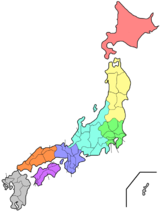Shiga Prefecture
| Shiga Prefecture | |||||||||
|
|||||||||
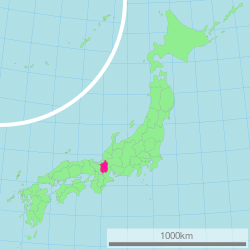 |
|||||||||
| Capital | Ōtsu | ||||||||
| Region | Kansai | ||||||||
| Island | Honshū | ||||||||
| Governor | Yukiko Kada | ||||||||
| Area (rank) | 4,017.36 km² (38th) | ||||||||
| - % water | 14.0% | ||||||||
| Population (April 1, 2000) | |||||||||
| - Population | 1,337,770 (31st) | ||||||||
| - Density | 332 /km² | ||||||||
| Districts | 5 | ||||||||
| Municipalities | 26 | ||||||||
| ISO 3166-2 | JP-25 | ||||||||
| Website | www.pref.shiga.jp/ english/index.html |
||||||||
| Prefectural symbols | |||||||||
| - Flower | Rhododendron (Rhododendron metternichii var. hondoense) | ||||||||
| - Tree | Japanese maple (Acer palmatum) | ||||||||
| - Bird | Little Grebe (Tachybaptus ruficollis) | ||||||||
| - Fish | {{{Fish}}} | ||||||||
 Symbol of Shiga Prefecture |
|||||||||
| Template ■ Discussion ■ WikiProject Japan | |||||||||
Shiga Prefecture (滋賀県 Shiga-ken) is a prefecture of Japan which is part of the Kansai region on Honshū Island. The capital is the city of Ōtsu.
Contents |
History
Shiga was known as Ōmi Province before the prefectural system was established. Because Omi was the next to Kinai and junction of western and eastern Japan, Omi has been developed since ancient times. In the years 667 to 672, the Ōmi Ōtsu Palace was founded by Emperor Tenji. In 1579, Oda Nobunaga built Azuchi Castle on the shores of Lake Biwa.
Geography
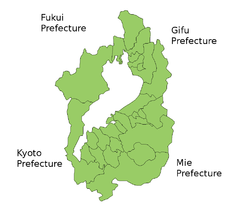
Shiga shares a border with Fukui Prefecture in the north, Gifu Prefecture in the east, Mie Prefecture in the southeast, and Kyoto Prefecture in the west.
Different areas of the prefecture include Kohoku (湖北, north of lake), Kosei (湖西, west of lake), Kotō (湖東, east of lake), and Konan (湖南, south of lake).
Lake Biwa, Japan's largest lake, is located at the center of this prefecture. It occupies one-sixth the total area of Shiga. The prefecture is enclosed by mountain ranges with the Hira Mountains in the west, the Ibuki mountain range in the northeast, and the Suzuka Mountains in the southeast. Northern Shiga is substantially colder with higher snowfall than in southern Shiga, which is usually warmer.
The Seta River flows out from Lake Biwa to Osaka Bay through Kyoto. This is the only natural river which flows out from the lake. All of the other natural rivers flow into the lake.
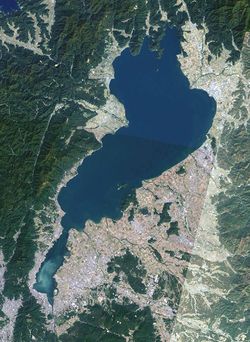
Cities
Thirteen cities are located in Shiga Prefecture:
|
|
Towns
These are the towns in each district.
|
|
Mergers
Politics
- Shiga Gubernatorial election, 2006
Economy
Since the Medieval Period, many Shiga people have been active in Japanese commercial fields and have been called Ōmi merchants (近江商人 Ōmi shōnin, Ōmi akindo). For example, Nippon Life, Itochu, Marubeni, Takashimaya, Wacoal and Yanmar are founded by people from Shiga. Ōmi merchants were often called Ōmi thieves (近江泥棒 Ōmi dorobō) by other jealous merchants.
Now, Shiga is an industry prefecture. A number of major companies have factories in Shiga such as IBM Japan, Canon, Yanmar Diesel, Mitsubishi, and Toray. According to Cabinet Office's stastics in 2006, Secondary sector of the economy accounted for 46.7 % of Gross Shiga Product, it is the highest proportion in Japan.
Demographics
The population is concentrated along the southern shore of Lake Biwa in Otsu city (adjacent to Kyoto) and along the eastern shore of Lake Biwa. Cities on the eastern shore like Kusatsu and Moriyama are within commuting distance to Kyoto. In recent years, many Brazilians have settled in Shiga to work in nearby factories. The lake's western and northern shores are more rural and resort-oriented with white-sand swimming beaches.
Culture
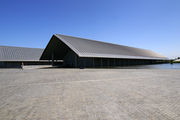
Biwa town (now a part of Nagahama) is a home of The Tonda Traditional Bunraku Puppet Troupe. Founded in the 1830s, the Tonda Puppet Troupe is one of the most active traditional Bunraku puppet theaters in Japan outside the National Theater in Osaka.
There is the Sagawa Art Museum in Moriyama, the Lake Biwa Museum in Kusatsu and the Miho Museum in Kōka.
Sports
The following sports teams are based in Shiga.
- Basketball: Shiga LakeStars (www.lakestars.net)
- Volleyball: Toray Arrows (women's volleyball team) (Otsu)
- Football (soccer): MIO Biwako Kusatsu (Kusatsu), Sagawa Shiga F.C. (Moriyama).
Tourism

The main gateways to Shiga are the Maibara Station in northern Shiga and the city of Otsu in the south.
There are temples, castles, festivals, historical persons, and natural beauty that rank among those of national importance. Shiga's most prominent feature is Lake Biwa. The lake can be visited either by car (you can drive completely around it in one day) or by boat. The northern part of the lake is especially scenic. The western shore has white-sand swimming beaches, popular among Kyotoites during the summer. It is less developed than the eastern shore where there are cities such as Nagahama, Hikone, and Omi-Hachiman.

Boat cruises such as the well-known Michigan paddlewheeler and cruises to scenic Chikubu Island are worthy excursions. Many lakeside towns also offer rental bicycles where you can hop on the bicycle at one train station and ride to another train station to return it. Cycling is a great way to see Shiga and the lake shore roads are very scenic. In spring, don't miss riding (or driving) through a stretch of road in Kaizu Osaki on the northern shore lined with cherry trees. It is one of "100 cherry blossoms sights in Japan".
Beautiful views of the lake can also be had from mountain roads like the Oku-Biwako Parkway road up north and the Hiei-zan Driveway and Oku-Hiei Driveway overlooking the southwestern shore. In Otsu, the Otsu Prince Hotel's Top of Otsu restaurant provides a superb high, panoramic view of the lake and city.
Like other prefectures, festivals abound in Shiga. Unique festivals include the Hikiyama Festival held each April in Nagahama. During this festival ornate floats are mounted with miniature stages on which highly-skilled boys (playing both male and female roles) act in kabuki plays. Meanwhile, Higashiomi (formerly Yokaichi) city holds a Giant Kite Festival every May along the riverbank. Ordinary people are invited to pull the rope that sends the kites aloft (unfortunately they don't fly very long if there's no wind).
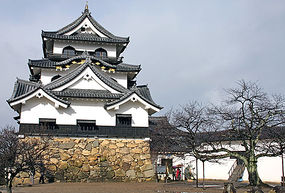
Shiga's most famous building is Hikone Castle, a national treasure. The castle tower is well preserved and provides a good glimpse into how a real castle looked during Japan's feudal period. It also has many cherry trees. The castle is associated with Ii Naosuke, who was the Tokugawa shogunate's Great Elder (Tairō). He favored and concluded commercial treaties with the Western powers and thus broke Japan's isolation from the world in the 19th century.
Shiga's second-most famous building is Ishiyama Temple in Otsu. It has a room where one of Japan's most famous novels, Tale of Genji was written.
Shiga Prefecture is also famous for its Omi Hakkei or Eight Views of Omi, popularized by Hiroshige's picturesque woodblock prints. Unfortunately, most of the original eight views are now almost gone or totally different from what they were centuries ago. One of them was set in Katata, home of the Ukimido, another famous building in Shiga. It is a small temple building built on stilts (now concrete pillars) on the lake near the shore, accessible by a short bridge.
Prefectural symbols
Lake Biwa, Hikone Castle, Eight Views of Omi, Funa-zushi, Omi beef, Shigaraki ware, Koga Ninja
Miscellaneous topics
Shiga also produced the 75th prime minister, Sosuke Uno from Moriyama. He was one of the shortest-serving prime ministers in Japan, holding office for only three months (June–August 1989). Shiga was also the hometown of the famous pen spinner bonkura.
Sister states
 Michigan, USA
Michigan, USA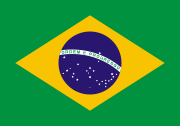 Rio Grande do Sul, Brazil
Rio Grande do Sul, Brazil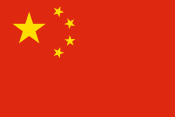 Hunan, People's Republic of China
Hunan, People's Republic of China
References
External links
|
|||||||||||||||||
|
|||||||||||||||||||||||||||||||||
